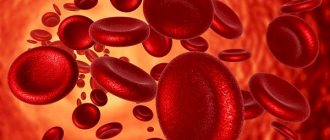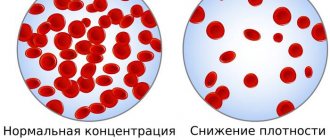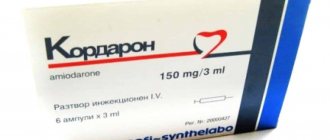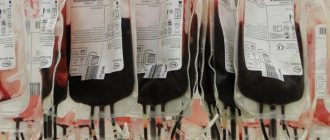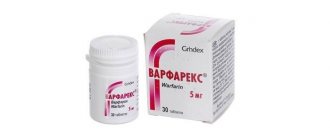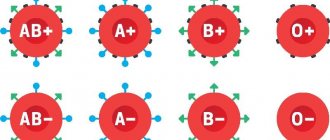Detailed description of the study
The liver is an organ in which complex metabolic processes occur. The functional activity of the liver is provided by hepatocyte cells, they are responsible for:
- Bilirubin exchange and bile formation;
- Regulation of carbohydrate metabolism;
- Regulation of fat metabolism;
- Formation of many proteins, including enzymes;
- Neutralization of toxic substances (medicines, alcohol, etc.).
Bilirubin is an orange-yellow pigment formed during the breakdown of heme (a component of hemoglobin). Every day, the human body synthesizes about 350 mg of indirect (free) bilirubin. Most of it is formed during the breakdown of red blood cells, a smaller part (about 20%) is formed from other heme proteins in the liver and bone marrow.
Free bilirubin is insoluble in water; it is transported in human blood plasma in combination with a protein - albumin. Next, the liver captures free bilirubin, and after a series of transformations it is converted into direct (associated with glucoronic acid) bilirubin, which is soluble in water.
Bound bilirubin in bile is sent to the gallbladder and released into the small intestine during food digestion. In the small intestine it is metabolized by bacteria to urobilinogen. Most of the urobilinogen is transformed into stercobilin, which turns the stool brown. A small amount of urobilinogen is reabsorbed by the liver and returns to the bile. A small part is excreted in the urine.
Normally, the level of indirect bilirubin in the blood is very low. If the concentration of bilirubin and its fractions increases, a person may develop yellowness of the skin and whites of the eyes. This condition is called jaundice.
Depending on the cause of bilirubin metabolism disorders, there are three types of jaundice:
- Hemolytic;
- Parenchymatous;
- Mechanical.
1) Hemolytic, or suprahepatic, jaundice is associated with increased release of bilirubin into the blood due to increased breakdown of red blood cells. The pigment formed during destruction is not captured by hepatocytes, but remains in the blood (having a toxic effect). A similar pathology can be observed in newborns when their Rh factor is incompatible with that of the mother (Rh conflict).
In rare cases, a congenital disorder of bilirubin metabolism known as Gilbert's syndrome occurs. This disorder is associated with reduced activity of the enzyme glucuronyl transferase, which converts indirect bilirubin into direct bilirubin. As a rule, it is determined by chance and has a favorable clinical course.
Hereditary diseases associated with defects in the functioning of enzymes responsible for bilirubin metabolism also include Dubin-Johnson syndrome and Rotor syndrome.
Increased release of indirect bilirubin into the blood accompanies hemolytic anemia. This condition is also associated with the premature breakdown of red blood cells and the inability to fully metabolize this pigment in liver cells due to its excess.
May be caused by internal defects in the red blood cells themselves (hereditary pathology) or:
- Taking certain medications (methyldopa, penicillin, quinine, etc.);
- Immunological disorders;
- Infections;
- Mechanical damage to blood vessels;
- Toxic effects (copper, lead).
2) Hepatic, or parenchymal, jaundice occurs due to lesions of the liver tissue. Such conditions are diagnosed with viral hepatitis, poisoning, sepsis, etc.
3) Mechanical, or subhepatic, (obstructive) jaundice occurs due to the presence of mechanical obstacles (stones, tumors) in the bile ducts, which impairs the outflow (excretion) of bile.
A bilirubin test may be used as part of an annual physical to evaluate liver health. It is also used to determine the causes of jaundice and helps the specialist determine the tactics of further therapy.
The study is also carried out in newborns with jaundice to determine its causes.
Gilbert's syndrome
One of the reasons for the deviation of the enzyme indicator from the norm is Gilbert's syndrome. Many people know nothing about this disease. His symptoms are mild, and the course of the disease is chronic. Among the few signs:
- muscle weakness, pain;
- bowel dysfunction;
- bloating;
- destabilization of the psycho-emotional background;
- feeling of heaviness in the right hypochondrium.
Genetic pathology disrupts bilirubin metabolism, resulting in test results that are abnormal. The syndrome is inherited in the form of a defect of the second chromosome. Some patients learn about the disease only after donating blood, when an altered enzyme level is detected.
Therapy is aimed at combating symptomatic manifestations and complications. The patient is also recommended to follow a strict diet for life.
Jaundice may develop against the background of Gilbert's syndrome. The pathology is treated with medication.
References
- Clinical guidelines “Drug-induced liver damage”, 2019. - 35 p.
- Pakhomova, R.A., Kochetova, L.V. Clinical manifestations of obstructive jaundice and liver failure, depending on the severity of obstructive jaundice of benign origin.” — Modern problems of science and education, 2021. — No. 6. — P.47.
- Sullivan, J., Rockey., D. Diagnosis and evaluation of hyperbilirubinemia. — Current opinion in gastroenterology, 2021. — Vol. 33(3). — P. 164-170.
The norm of total bilirubin in the blood of women
Throughout life, the level of the enzyme does not change. After 40, slight fluctuations may be observed due to hormonal fluctuations. A deviation from the norm is observed after 50 years. The process is natural, associated with menopause. The following can also provoke a decrease or increase in bilirubin: stress, poor nutrition.
Significant changes in enzyme levels are observed in women after 60 years of age. Provoke pathology: heart disease, vascular disease. The level of bilirubin in these cases decreases.
The average enzyme norm for women over 50 who do not have pathologies of the digestive system is limited to the range of 3.5-20.5 µmol/l.
Do not despair if test results show minor deviations. This can occur during menstruation, pregnancy, or after 40-50 years of age. An increase in the enzyme is also observed during climate change, during the period of ovulation.
Standard indicator by age | |||||||
| Age/ type of bilirubin (µmol/l) | 18-20 | 21-30 | 31-40 | 41-50 | 51-60 | 61-70 | from 70 and above |
| Straight | 0,89-4,26 | 1-4,6 | 0,96-4,46 | 0,99-4,5 | 0,94-4,36 | 0,86-4,29 | 0,79-4,24 |
| Indirect | 2,63-12,76 | 3-13,6 | 2,86-13,36 | 2,96-13,3 | 2,78-13,06 | 2,56-12,83 | 2,33-4,24 |
| General | 3,6-18 | 4-19 | 3,9-17,9 | 3,9-17,7 | 3,8-17,5 | 3,5-17,2 | 3,2-16,9 |
Treatment
The choice of treatment regimen is made by the doctor taking into account the identified pathologies. When making a diagnosis, the nature of the enzyme deviation from the norm (increased or decreased value) is taken into account.
There are no special pharmacological agents that lower bilirubin. In cases where the provoking factor is medications or toxic substances, it is necessary to stop taking them. If we are talking about vital medications, the doctor selects safe substitutes.
When the enzyme level is too high, the following methods are used:
- the use of drugs that activate the outflow of bile (Allahol, Hofitol);
- cleansing droppers with glucose (stimulating the elimination of indirect toxins);
- phototherapy (irradiation with special lamps, under the influence of light the molecules of indirect bilirubin and other substances bind together);
- taking pharmacological agents that accelerate metabolic functions (Mezim, Festal, Pancreatin);
- dietary diet.
Diagnostics
Doctors are faced with the task of reducing bilirubin levels to normal limits, and this can only be done by knowing the reason for its increase. Therefore, after a blood test to determine the concentration of bilirubin, the following tests are also performed:
- on the level of alkaline phosphatase;
- alanine aminotransferase activity;
- presence of glucuronyl transferase and other studies.
An ultrasound of the liver is also prescribed to determine its condition. Laboratory tests include: general blood and urine analysis, level of total coproporphyrin in daily urine, phenobarbital test, bromsulfalein test, test for markers of hepatitis viruses.
The purpose of diagnosis is not only to determine the level of bilirubin, but also its form. For example, an increase in direct bilirubin occurs when bile flow is impaired (dyskinesia). The concentration of indirect bilirubin increases due to liver problems and excessive destruction of red blood cells. Having established the form of bilirubin, it is necessary to differentiate the specific disease (pathology).
Increased direct bilirubin
The direct enzyme begins to accumulate in the blood due to a disruption in the process of bile outflow. Instead of going into the stomach, it enters the bloodstream. This condition occurs with hepatitis of bacterial and viral etiology, chronic, autoimmune, and drug-induced hepatitis. It can occur with cholelithiasis, cirrhosis, oncological changes in the liver, cancer of the gallbladder or pancreas. Be a consequence of congenital Rotor syndrome (a milder form of a defect in bilirubin excretion) or Dubin-Johnson syndrome (a more severe form).
Determination of bilirubin level
The amount of bilirubin is determined using a biochemical blood test. Material for research is collected from a vein. If the patient is a newborn, blood may be taken from the heel. The test must be taken on an empty stomach. However, it is recommended to have dinner the night before. A long hunger strike can affect the possible results. It is better to make the menu before taking the test from dairy products, fruits and vegetables. But it’s better to avoid alcoholic beverages. Taking them before taking a biochemical blood test is strictly prohibited. You should not eat fatty and spicy foods. You should also give up coffee. The last meal should take place 8 hours before the procedure.
You should not take antibiotics, drugs that irritate the blood, choleretic agents and enzymes. Stop using them one day before donating blood. If refusal to take medications is impossible for health reasons, it is recommended to notify the laboratory technician about this fact.
Blood is drawn using a syringe and needle or catheter. The procedure is not very painful. Relatively recently they began to use TBI. The procedure does not involve causing mechanical damage to the patient for blood collection. During its implementation, a device is used that measures pigment in the skin in the area of the bridge of the nose and on the chest. The head of the measuring device is placed against the area being tested and then fixed for a few seconds. When the measurement is completed, the resulting data is displayed on a digital display. The device allows you to very accurately monitor the course of the disease and the progress of treatment. However, the method of measuring bilirubin is not yet used in all medical institutions.
The results are influenced by a large number of factors. If the amount of bilirubin in the blood is significantly deviated from the norm, but no pathologies are observed, it is recommended to take the test again.
Symptoms of abnormal bilirubin levels and when to see a doctor
Some factors may indicate an increase in the concentration of pigment in the blood even before the test results are obtained.
What to pay attention to:
- pain in the left hypochondrium after physical activity or sports training;
- feces become light-colored and urine darkens;
- the appearance of vomiting and nausea;
- yellowing of the whites of the eyes, skin and mucous membranes;
- dizziness and weakness;
- nausea, vomiting and lack of appetite;
- chronic fatigue and anxiety.
Preventive measures
To prevent the amount of bilirubin in the blood from deviating from normal, experts recommend taking preventive measures. To do this, you need to try to get rid of bad habits. Do not overuse fried, salty or other foods that can harm the body. It is better to use purified water. It is necessary to increase the amount of natural vegetables and fruits in the daily menu. It is better not to eat regular sugar. Experts recommend replacing it with reed. It is necessary to select a vitamin complex that can provide the human body with all the necessary substances.
